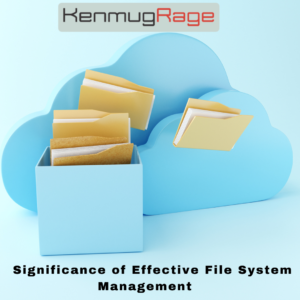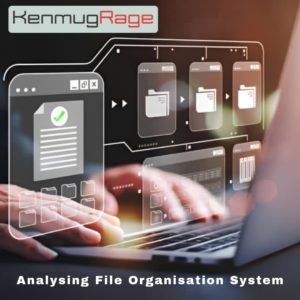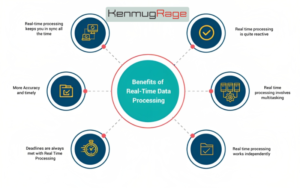” Navigating Digital Order: Strategies For Effective File System Management”
Organising your digital lines is a daunting task, but it does not have to be. With the right strategies and tools, you can produce a dependable and effective file system that helps you detect important documents snappily and fluently.
In this blog post, we’ll bandy the fundamentals of file system operation and give tips on how to produce a comprehensive system that works for you. By the end of the post, you will have the knowledge and tools to navigate the world of digital order and make managing your file system easier than ever ahead.
1.The significance of Effective file System Management 
Effective file system operation may not be the most instigative task on your to- do list, but it’s really one of the most important. A well-organised file system not only saves you time and frustration but also ensures that your important documents and lines are fluently accessible whenever you need them. One of the main benefits of effective file system operation is the time it saves you.
When your lines are organised in a logical and intuitive manner, you do not waste precious twinkles searching through flyers and subfolders trying to find what you are looking for. Rather, you can snappily detect the document or file you need, whether it’s for a meeting, a donation, or particular use.
This effectiveness can have a significant impact on your productivity, allowing you to concentrate on more important tasks. Another pivotal aspect of effective file system operation is icing the security and safety of your digital means. With a well-organised file system, you can fluently identify and back up important lines, icing that they’re defended in the event of a system failure or accidental omission. By having a methodical approach to file association, you can minimise the threat of losing precious data and maintain the integrity of your digital means.
Effective file system operation also helps with collaboration and sharing. Whether you are working on a platoon design or sharing lines with associates, having a well-organised file system makes it easier to unite seamlessly. By using harmonious picking conventions and logical brochure structures, you can ensure that everyone involved can fluently pierce and detect the lines they need, promoting effective communication and collaboration. In addition, effective file system operation can contribute to better association in other aspects of your life.
2.Understanding Your Digital Assets
When it comes to effective file system operation, understanding your digital means is pivotal. Your digital means encompass all the lines, documents, and data that you have stored on your computer or in the pall. These means can range from particular lines like prints and videos to work related documents and important donations.
By having a clear understanding of your digital means, you can more organise and manage them. One way to start understanding your digital means is by conducting a force. Take the time to go through your lines and identify what you have. Classify them into different types similar as documents, prints, vids, or music.This will give you a visual representation of your means and help you determine the stylish way to organise them.
Next, consider the significance and applicability of each asset. Some lines may be essential for your work or particular life, while others may be outdated or gratuitous. Estimate whether you need to keep each file and whether it’s worth the space it takes up in your file system. Deleting or archiving lines are no longer demanded can help declutter your system and make it easier to find what you are looking for.
3.Analysing Your file Organisation System
Analysing Your file Organisation System Once you have created a file association system, it’s essential to periodically dissect its effectiveness. By assessing and fine- tuning your system, you can ensure that it continues to meet your requirements and remains effective over time.
Then are some strategies for analysing your file association system. launch by assessing the structure of your flyers and subfolders. Are they still logical and intuitive? Do they directly represent the orders and types of lines you have?Take the time to review and acclimate your brochure structure as demanded.
This may involve incorporating or unyoking flyers , creating new orders, or renaming living ones. The thing is to have a system that makes it easy for you to detect lines without having to dig through multiple layers of flyers . Next, estimate the picking conventions you’re using for your lines. Are they harmonious and descriptive? Do they help you snappily identify the content of each file? Consider whether your picking conventions can be better to make file reclamation indeed more effective.
You may want to add fresh details or keywords to your file names, icing that they directly reflect the content and purpose of each file. Flash back, the thing is to have file names that are fluently searchable and give a clear understanding of what the file contains. Another aspect to dissect is the association of your lines within each brochure. Are your lines duly sorted and arranged? Take the time to rearrange lines within flyers , placing them in chronological or alphabetical order if it makes sense for your requirements.
4.Decluttering and Reorganising Your files
Decluttering and reorganising your lines is a necessary step in effective file system operation. Over time, our digital lines can accumulate and come disorganised, making it delicate to find what we need when we need it. By taking the time to declutter and reorganise your lines, you can produce a streamlined system that’s easy to navigate and maintain.
To begin decluttering your lines, start by reviewing each brochure and subfolder in your file system. Look for lines that are outdated, gratuitous, or duplicates. cancel or library these lines to free up space and reduce clutter. It’s important to be aware of what you cancel or library, so make sure to precisely assess each file’s applicability and significance. You can also consider using software tools that can help identify indistinguishable lines and help in the decluttering process.
Once you’ve decluttered your lines, it’s time to reorganise them in a way that makes sense for you.Estimate your brochure structure and determine if any changes need to be made. Are there too numerous subfolders within a brochure? Do certain lines belong in a different brochure? Rearrange your lines and flyers as necessary to produce a logical and intuitive system. When reorganising your lines, consider using descriptive file names and harmonious picking conventions. This will make it easier to snappily identify the content of each file and detect specific lines in the future.
5.Utilising Naming Conventions

When it comes to effective file system operation, exercising naming conventions is crucial. Naming conventions are formalised rules or guidelines that mandate how lines should be named to ensure thickness and clarity. By enforcing naming conventions in your file association system, you can greatly enhance your capability to detect and recoup lines snappily and efficiently.
One important aspect of exercising naming conventions is using descriptive and meaningful file names. Rather than general names like” Document1″ or” unidentified,” aim to include applicable information in your file names.This could include details similar to the design or customer name, the date the file was created or modified, or a brief description of the file’s contents.
For illustration, a file named “ProjectX_MeetingNotes_20210715″ provides much further information than simply” MeetingNotes.” Thickness is another pivotal factor in effective picking conventions. Decide on a specific format for your file names and stick to it constantly throughout your file system. This could involve using specific partitions, similar as underscores or dashes, or exercising capitalization or bowdlerizations. Thickness in file names makes it easier to overlook through a list of lines and snappily identify the bone you are looking for.
In addition to descriptive and harmonious file names, consider including interpretation figures or modification dates in your picking conventions. This is especially useful for lines that suffer frequent updates or variations. By including an interpretation number or date in the file name, you can fluently separate between different duplications and track the most recent interpretation of a file.
Conclusion:
In moment’s digital age, effective file system operation is essential for staying systematised and productive. By enforcing the strategies and tips bandied about in this blog post, you can take control of your digital lines and produce a system that works for you.
Flash back the significance of effective file system operation in saving time, icing the security of your digital means, and promoting collaboration. By organising your lines in a logical and intuitive manner, you can snappily detect important documents, cover them from loss or damage, and fluently partake them with associates or platoon members.
Also Read : Power BI Healthcare Financial Dashboard To Optimize Decision Making [Case Study]
Also Read : 5 uses of penetration testing uses




